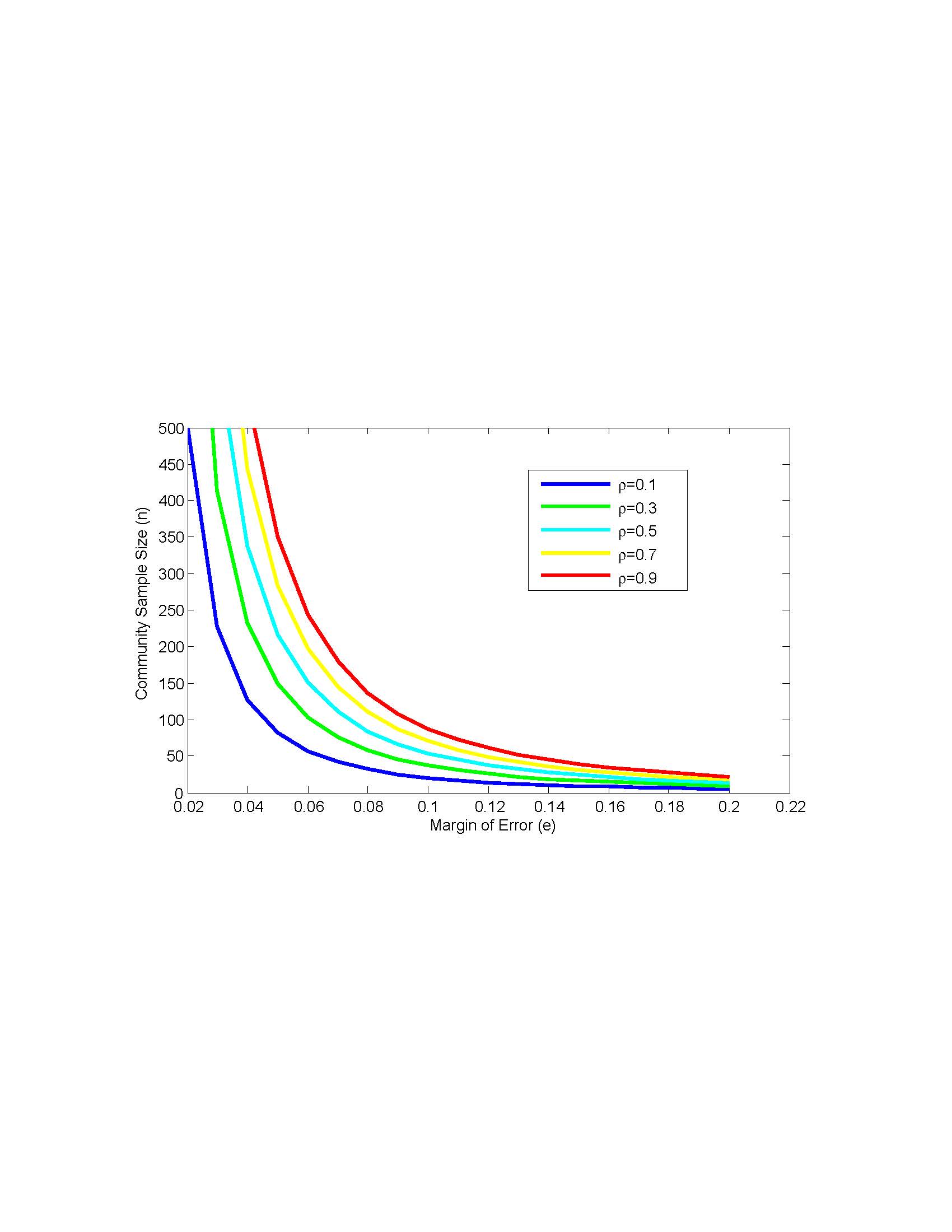Annex L - Sample size calculation
Annex L_Sample size calculation (4).docx
Rural Community Wealth and Health Care Provision Survey (RCWHCPS)
Annex L - Sample size calculation
OMB: 0536-0072
ANNEX L
SAMPLE SIZE CALCULATION
Sample size calculation
To estimate the sample size, we simplify the variance estimator shown in Annex J, equations (4) and (5), by assuming a two stage simple random sample design, which is less efficient than our actual sample design; hence yielding a conservative estimate of the variance. To get an analytic closed form approximation for the variance estimator, we assume that each community has the same size of population of potential respondents (M) and that we draw a sample of m respondents from each community. We also conservatively assume that the number of communities in the frame (N) is very large, so that terms such as 1/N and n/N can be neglected. Under this simpler design, the variance estimator is approximately:
1)

where
 is
the population proportion being measured, n is the number of
sampled communities, and
is
the population proportion being measured, n is the number of
sampled communities, and
 is
the intracluster (within community) correlation for variable y.
is
the intracluster (within community) correlation for variable y.
Applying equation (1), the estimated number of sample communities (n) necessary to achieve a given margin of error (e), assuming a 95% confidence interval, is given by:
2)

Figure
L.1 shows values of n for various values of e and
 ,
assuming conservatively that
,
assuming conservatively that
 =
0.5. We assume that m = 8, as in our sample design (whenever M
≥ 8). If we target a margin of error of 0.05 (10% of
=
0.5. We assume that m = 8, as in our sample design (whenever M
≥ 8). If we target a margin of error of 0.05 (10% of
 ),
the estimated number of sample communities required ranges from 48 if
),
the estimated number of sample communities required ranges from 48 if
 =
0 to 384 if
=
0 to 384 if
 =
1. We expect
=
1. We expect
 to
be less than 0.5, and take 0.3 as a reasonable value. For this value
of
to
be less than 0.5, and take 0.3 as a reasonable value. For this value
of
 ,
the estimated sample size required is 149 communities. Based on this,
we selected 150 communities as our sample size.
,
the estimated sample size required is 149 communities. Based on this,
we selected 150 communities as our sample size.
If
our assumptions prove to be incorrect, the actual margin of error
will be different than that estimated. The sensitivity of e
to variations in our assumptions is not very large if n = 150;
ranging from 0.028 if
 =
0 to 0.08 if
=
0 to 0.08 if
 =
1. However, the range of e for different values of
=
1. However, the range of e for different values of
 becomes larger for smaller values of n; especially for sample
sizes smaller than 100. Given lack of prior information about the
true value of
becomes larger for smaller values of n; especially for sample
sizes smaller than 100. Given lack of prior information about the
true value of
 , a
community sample size of at least 150 appears prudent.
, a
community sample size of at least 150 appears prudent.
Figure L.1. Required sample size as a function of margin of error and intracluster correlation

| File Type | application/vnd.openxmlformats-officedocument.wordprocessingml.document |
| Author | %USERNAME% |
| File Modified | 0000-00-00 |
| File Created | 2021-01-24 |
© 2025 OMB.report | Privacy Policy